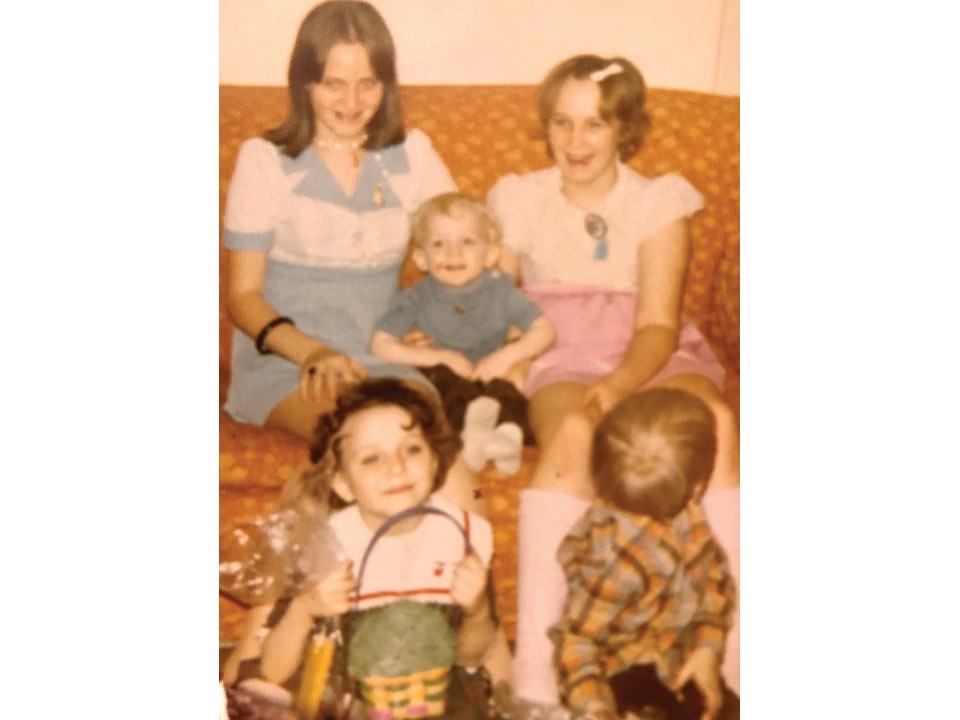Sandy's boyfriend Chris Day, the father of her child, has two dates seared in his brain. "September 4," he says. "February 17."
"Those months were unbearable," he says.
On February 17, 1991, a security guard at the General Motors plant in Wentzville was headed to work, driving on I-70 through O'Fallon, Missouri, when he saw a strange box on the side of the highway. It was odd looking, clearly homemade. The security guard stopped, picked it up and put it in the back of his truck. Apparently, he was a bit of a pack rat and regularly did this sort of thing.
"That morning he's driving to work and he starts smelling something," Burgoon says.
By the time the security guard got to the GM plant, fluid was coming out of the box. The security guard called the police.
The Wentzville police there asked the man where he found the box. When he said along I-70 in O'Fallon, the police decided it was O'Fallon's case, not theirs.
"[O'Fallon] was working what they could on it," says Burgoon. "But all they were trying to say is that it's a prostitute from St. Louis, and they tried to dump it on St. Louis." According to the rules of the trade, however, O'Fallon remained the lead agency. Says Burgoon, "Whoever's got the body got the body."
When detectives opened the box, they found that decomposition had set in. The body was mostly bones, one detective says. A doctor could only identify the remains as Sandy's based off a rib she'd broken and had x-rayed before her abduction.
The most important piece of evidence was a sock cap with a logo stitched onto it for Ticor Title, the title insurance firm. "Sandy would never have worn that sort of thing," Studt says, meaning that it must have belonged to the killer. Ticor Title has long left St. Louis, but at the time a representative said only about 100 of the hats were made and given out as promotional items. The hat was tested for DNA to no avail.
Studt remembers when she heard about the discovery of Sandy's body. She was in her kitchen, the local news on in the background. She sensed her stepsister's body had been found before she processed the newscaster's words.
What remained of Little's body wore the uniform of the fast-food restaurant where she worked. She'd been abducted after work, though it's unknown if she was walking the Stroll or walking home.
"She was someone who you loved to be in the room with because she would just brighten it up," Studt says. "She had a lot of demons, but you never would have known it if you'd just seen her."
"I think of her all the time," says Sandy's younger sister Geneva. "It stays with you. She's stayed with me."
BRENDA JEAN PRUITT
Three weeks after Little's body was found, police finally identified the Maryland Heights Jane Doe.
Her name was Brenda Jean Pruitt. She was 27, and her family had reported her missing nine months before, in May 1990. More than 21 weeks passed between the discovery of her body and her identification.
After the police's computer system failed to find a match for the single ring-finger fingerprint taken off the badly decomposed Jane Doe, a police fingerprint examiner named Janet Majors meticulously compared it with the prints already on file. One by one she compared the single print with more than 1,800 others before finally coming across a match.
Pruitt had no record of prostitution. Police were quoted in the Post-Dispatch saying that other women who worked the Stroll didn't know her. She had been arrested previously for a handful of minor offenses, which is why her prints were on file, but of all the victims the least is known about her. She had a friend in a senior living facility near Cherokee Street, Burgoon says. But whereas it's easy to understand the circumstances under which Little and Mihan got in a car with their killer, the picture is hazier for Pruitt.
The more you think about the way in which the bodies were left, particularly those of Pruitt and Little, the more bizarre the picture of the killer becomes. If a body is decomposed beyond recognition, why not leave it in the woods or in one of the city's thousands of vacant homes? To put the remains in a receptacle along the highway ensures they are found in short order and leaves no doubt of foul play.
Pruitt's family declined to speak to the media at the time, and extensive efforts to locate them in recent months yielded no contacts. Brenda is buried at Calvary Cemetery, the space and burial expenses donated by the Archdiocese of St. Louis. The plot is unmarked, with nothing to indicate it is anyone's final resting place.








